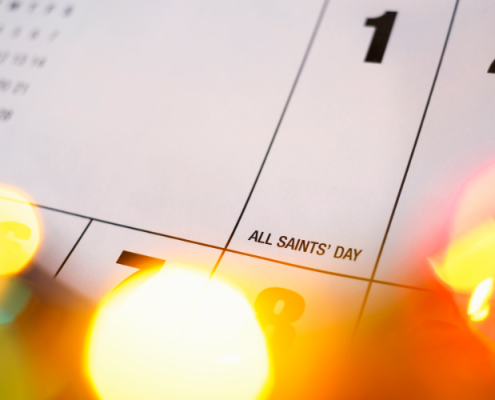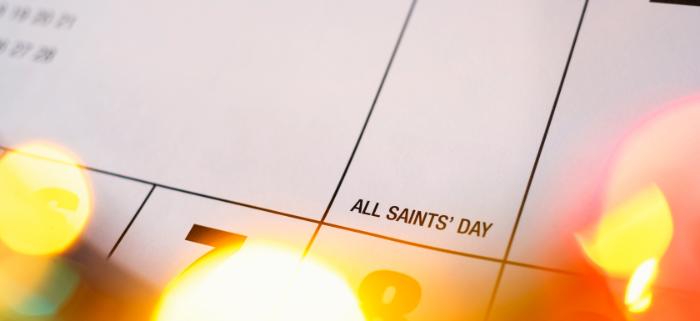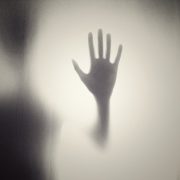What is the history of Halloween and its connection to funerals?
 When we think of Halloween, our minds often conjure images of carved pumpkins and children wearing spooking costumes, going trick-or-treating for sugary treats. It’s a night of fun, frights, and candy-induced sugar rushes. However, Halloween hides a rich history beneath the layers of costumes and candy.
When we think of Halloween, our minds often conjure images of carved pumpkins and children wearing spooking costumes, going trick-or-treating for sugary treats. It’s a night of fun, frights, and candy-induced sugar rushes. However, Halloween hides a rich history beneath the layers of costumes and candy.
Did you know that Halloween is deeply intertwined with a most unexpected companion: funerals? In this exploration of Halloween’s haunting history, we’ll delve into the eerie side and unmask the holiday’s connection with the solemn world of funerals.
The Fascinating Ancient Roots of Halloween
In the past, Halloween was known as All Hallow’s Eve. It was a holiday celebrated on October 31, or the eve of All Saints’ Day. The roots of this occasion extend more than two millennia into the past, finding their beginnings in the ancient Celtic observance known as Samhain. This marked the end of the harvest season and the beginning of the “darker half” of the year, aka winter.
Samhain is a festival on November 1, but celebrations start on the evening of October 31 because the Celtic day begins and ends at sunset. This phase was then considered a time when the boundary between the living and the dead was believed to be at its thinnest, allowing spirits to roam freely on Earth. This was also considered a halfway point between the autumnal equinox and the winter solstice.
The Connection to Funerals: Honoring the Deceased
One of the most striking connections between Halloween and today’s funeral and cremation services is the common theme of honoring the deceased. In Celtic tradition, Samhain was not just a festival but a time to pay respects to deceased loved ones. Families would set a place at the dinner table for their departed relatives, leaving food and drink to nourish their spirits.
You may find that this tradition bears a striking resemblance to the modern Mexican holiday called Dia de los Muertos. It’s also known as the Day of the Dead. Families build altars to honor and remember their deceased loved ones on this occasion.
The Evolution of Halloween: From Pagan Rituals to Christian Traditions
As history evolved, so did the celebration of Samhain. In the 8th century, the Catholic Church sought to replace pagan rituals with Christian ones. Pope Gregory III moved All Saints’ Day from May 13 to November 1, aligning it with Samhain and transforming the pagan festival into a Christian holiday.
All Hallows’ Eve, or Halloween, became a time to remember and honor Christian saints and martyrs who had passed away. That’s why October 31 is known as All Saint’s Day in the Catholic liturgical calendar.
Taking a Peek at Ancient Origins in Modern Traditions
Today’s Halloween traditions, filled with spooky costumes, jack-o-lanterns, and trick-or-treating, are deeply rooted in ancient Celtic rituals. Let’s take a closer look at the connection between our contemporary celebrations and the rich tapestry of history.
- Costumes and Disguises: The practice of wearing costumes on Halloween also has intriguing ties to funerals. During Samhain, people would dress in costumes made from animal hides to disguise themselves and ward off supernatural beings and malevolent spirits. This disguise allowed them to move freely among the roaming ghosts. Over time, this tradition morphed into the costumes we know today – a playful nod to Halloween’s eerie origins.
- Jack-o’-Lanterns: The humble jack-o’-lantern or eerie pumpkin, a staple of Halloween decor, has its own ghoulish connection to funerals. According to legends, a man named Stingy Jack, known for his trickery was denied entry to heaven and hell upon his death. He was condemned to roam the Earth as punishment. He only had a lump of burning coal inside a hollowed-out turnip to light his way. People in Ireland and Scotland began carving their own versions of “Jack’s lanterns” to ward off evil spirits on All Hallows’ Eve.
- Trick-or-Treating: The tradition of trick-or-treating, where children go door-to-door searching for sweets, has roots in an old practice known as “souling.” On All Souls’ Day, poor people in England would go door-to-door, begging for soul cakes. In exchange for these cakes, they would offer prayers for the souls of the homeowners’ deceased loved ones. This practice evolved into the modern-day custom of trick-or-treating, where children dress up and collect candies.
Halloween Today: A Blend of Festivity and Remembrance
Today, Halloween has evolved into a holiday that blends festivity with remembrance. We may not leave food for the departed or wear animal hides to ward off spirits, but the underlying connection to funerals remains. It’s a night when we embrace our fascination with the macabre and confront our fear of the unknown. In doing so, we pay homage to the ancient traditions that continue to shape our modern celebrations.
As you prepare to celebrate Halloween this year, take a moment to reflect on its timeless connection to funerals and the honoring of the deceased. From its Celtic roots to its Christian transformation, Halloween’s history is a tapestry woven into the concept of remembrance. So, as you don your costume and carve your pumpkin, remember the ancient spirits who once walked the Earth on this eerie night. It reminds us that even in the midst of revelry, we can pay our respects to those who came before us. Light a candle, visit their cremation niches or graves, play their favorite songs, or say a prayer. The important thing is you remember, celebrate, and believe they are in a better place.









